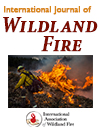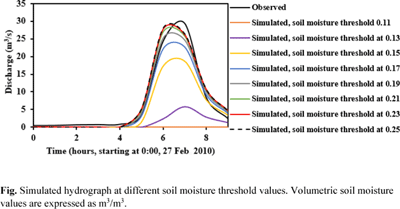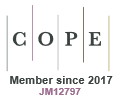WF22083Examining the effect of moisture thresholds on post-fire water-repellent soil: a large-scale modelling approach applied to the Upper Arroyo Seco watershed, California, USA
At a watershed scale, the impact of wildfires on runoff following a precipitation event is greatest when the soil is dry and decreases sharply as soil moisture increases. Once the post-wildfire soil moisture reaches the threshold value of 0.25 m3/m3, flooding due to water repellency is no longer significant.
WF22083 Abstract | WF22083 Full Text | WF22083PDF (2.5 MB) Open Access Article






